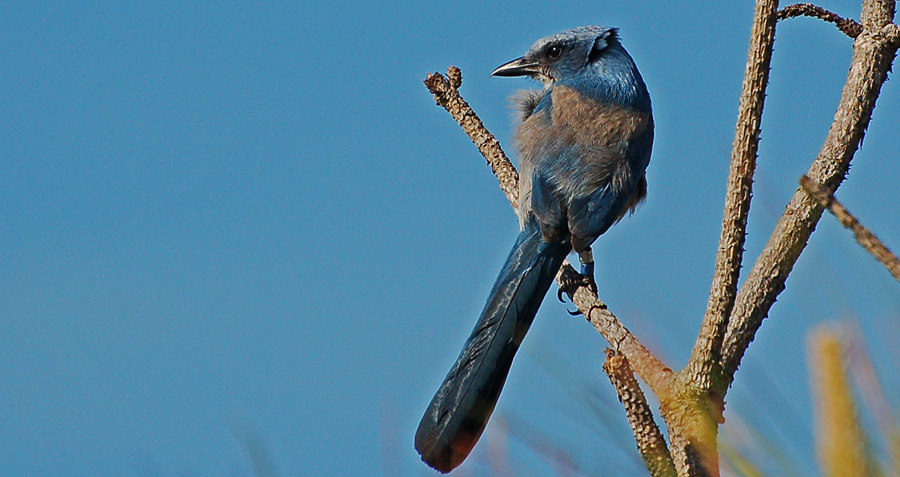Hinesi
Hinesi are a type of diurnal bird found in many places throughout Veshiri. Scientifically, the Hinesi are a sub-family consisting of five genii.
They are known for their bold coloration, sharp calls, and carrion-eating habits, and throughout history were frequently associated with ill omens. However, the people at the time of the Great Plague observed the birds avoiding infected corpses and fleeing areas before the disease struck, leading to a partial reversal in perception, as the birds became bellwethers against the worst of diseases. Indeed, urban peoples generally perceived the birds more favorably, and the question of their intelligence is considered a modern-day curiosity alongside the equally clever bumble dragon, as hinesi have been observed mimicking elves to make their lives easier. Some engineers claim hinesi can sense when an experiment is about to fail - perhaps hearing something elven ears cannot - and view them as essential partners.
Systematics and Species
There is debate whether hinesi constitute a monophyletic group (meaning having a common ancestor) or not. There are currently two or three suspected lineages - it's unclear whether the malachite hinesi, a lineage containing a single species, are from a separate lineage than the Dijuatic hinesi. Furthermore, the genus Lidi, which contains all of the Mereiosen hinesi, has anywhere from one to seven species - the birds of Lidi exhibit quite a bit of variation, but it's unclear if different geographic groupings are indeed different species, or merely different breeds or morphs of the same species.Mereiosen Hinesi
Genus Lidi
-Ederiudan hinesi -Kodiri hinesi -Northern hinesi -Grey-winged hinesi -Black-winged hinesi -Blue-billed hinesi -Red-billed hinesiDijuatic hinesi
Genus Nahbib
-Lokmei hinesi -Duakeo hinesi (may be conspecific with Lokmei hinesi)Genus Qomil
-Sistu hinesi -Uneqe hinesiGenus Resav
-Huihen hinesi -Nedadi hinesi -Idiqo hinesiMalachite hinesi
Genus Haloi
-Green hinesiBasic Information
Anatomy
Like many birds, hinesi have two forelimbs adapted into wings and two hind-limbs adapted into legs. They have light-weight bones, and respiratory, muscular, and circulatory systems designed to support flight.
Biological Traits
The average wingspan is 28 inches, though this varies with species.
Genetics and Reproduction
Most species begin reproducing in their second year, finding a mate who they will stay with for life. Mating season is in the spring, and eggs are laid in clutches of three to twelve, with averages around five or six.
Ecology and Habitats
Hinesi usually prefer living in temperate woodlands, forest-grassland ecotones, and urban areas, where shelter is never too far away but food can be easily found.
Dietary Needs and Habits
The different hinesi species have varied diets, but most are at least somewhat omnivorous. Nuts, seeds, grain, carrion, and insects are reoccurring themes, with some larger species also eating small mammals, birds, amphibians, and reptiles as well as eggs. Species from wetter climes such as temperate rainforests also often eat fruit, which most hinesi can consume in at least small quantities.
Additional Information
Social Structure
Most hinesi prefer living in families or colonies of varying size, ranging from five to eighty individuals depending on species. The more intelligent species tend to form larger colonies.
Geographic Origin and Distribution
Hinesi are located in temperate biomes throughout Veshiri.
The Nahbib genus is limited to the Lokmei subcontinent and the Duakeo Mountains to its southwest.
The Mereiosen hinesi have the broaded range of hinesi, covering the super continent Mereiose (comprosing the continents Ederiuda and Koromi), with the Ederiudan hinesi being the only species found on the continent of Ederiuda. The Dijuatic have the next broadest range, being found across the continent Dijua. The malachite hinesi are an isolated group, found only on one cluster of islands to the east of Dijua.
Average Intelligence
Extremely intelligent, on par with bumble dragons and several close relatives of the elves. Have been shown to recognize themselves in mirrors. The exact extent of their intelligence is debated.
Perception and Sensory Capabilities
Hinesi have keen vision and hearing, more so than most non-specialized birds. Like most birds, they can see in color, with four types of cones - roughly corresponding to red, blue, green, and ultraviolet. They do not have especially sensitive night vision, being diurnal.
Lifespan
6.7 years in the wild, 11.5 years in captivity, with lifespans up to 23.8 years recorded
Conservation Status
The sub-family is extremely common, to the point of being considered a pest in some places. None of the species are endangered, though some have lower numbers than others.
Average Length
21 inches, varying with species.
Body Tint, Colouring and Marking
Species vary in exact coloration, but shades of green, blue, grey, and black are common themes.



Comments